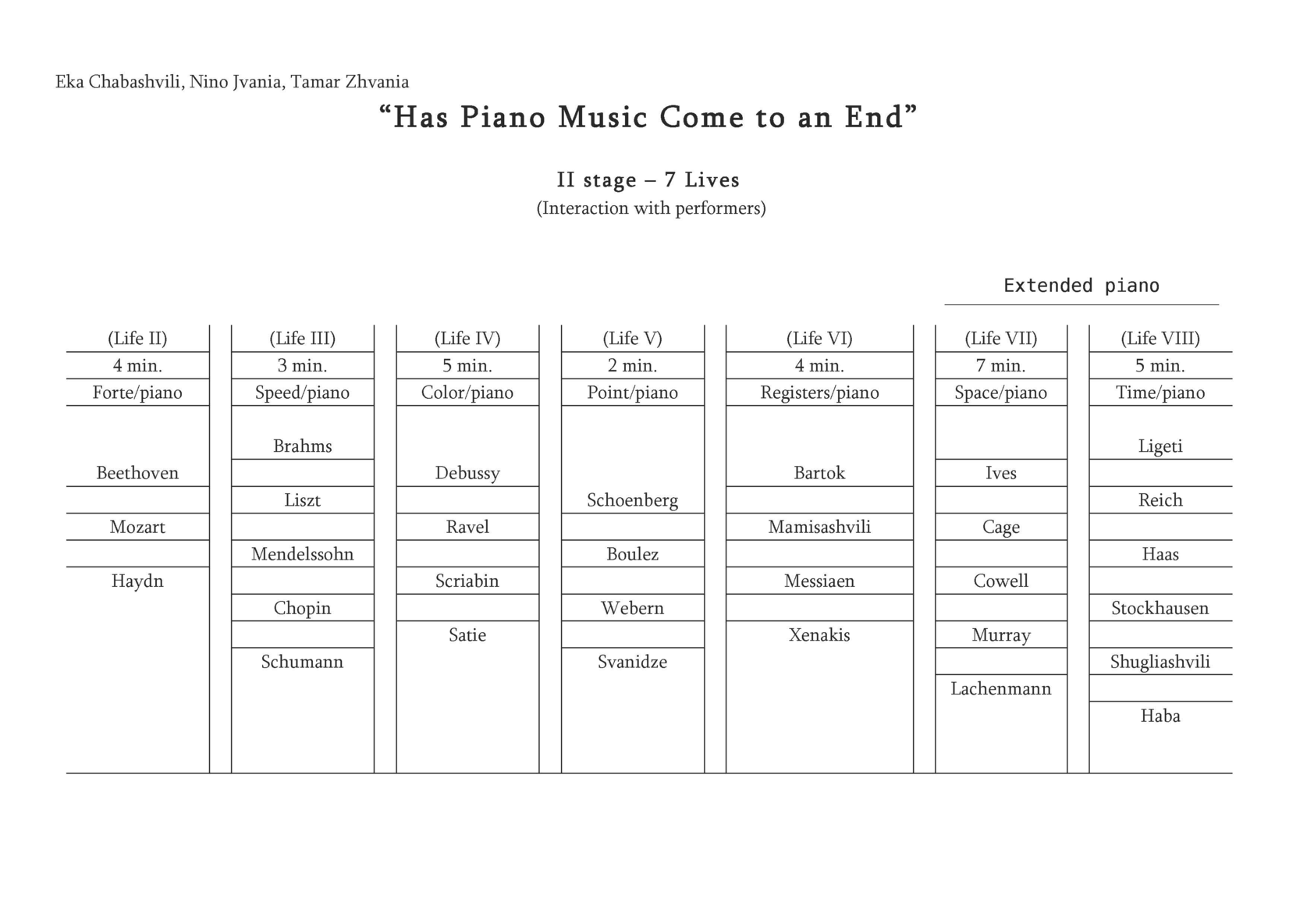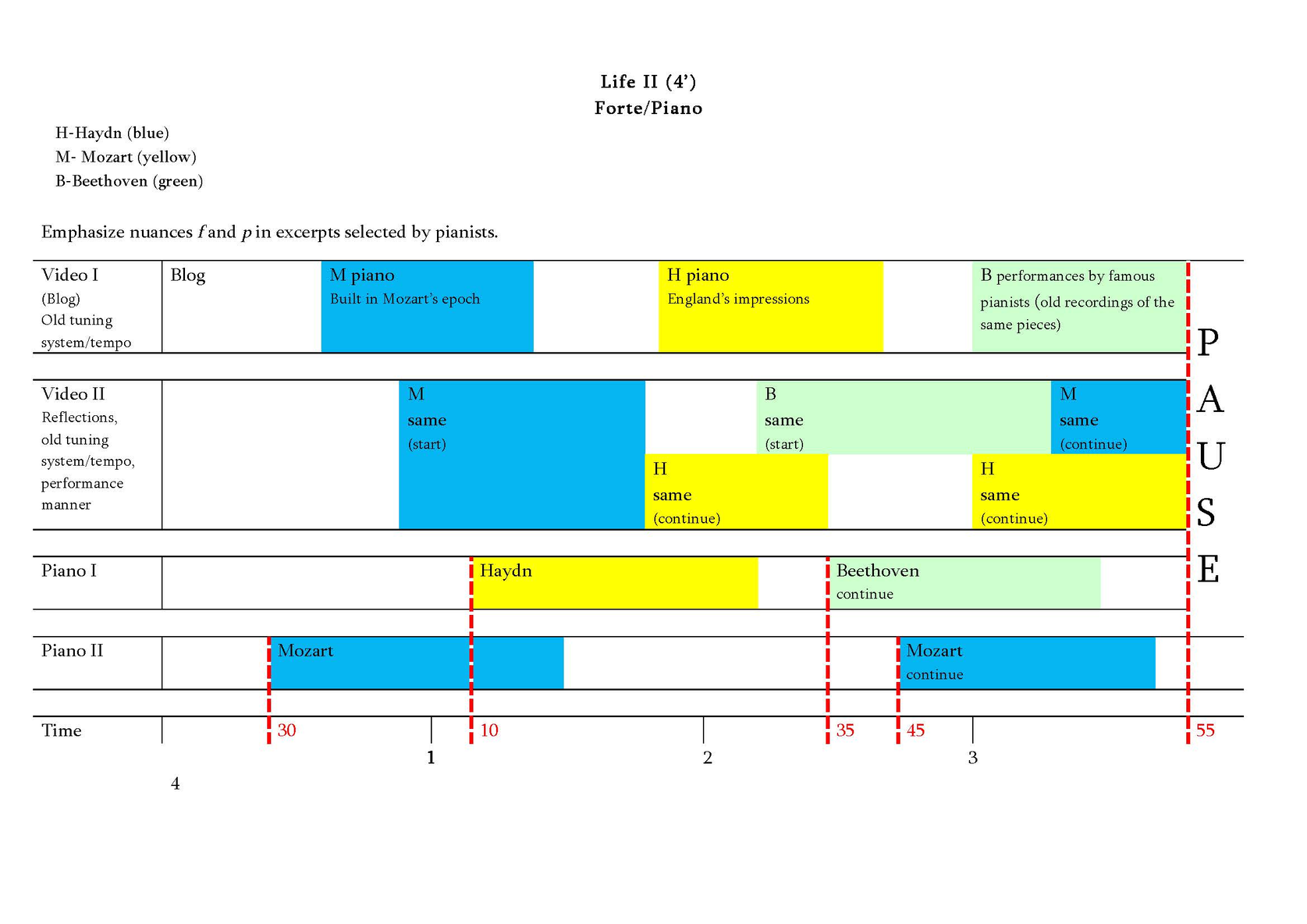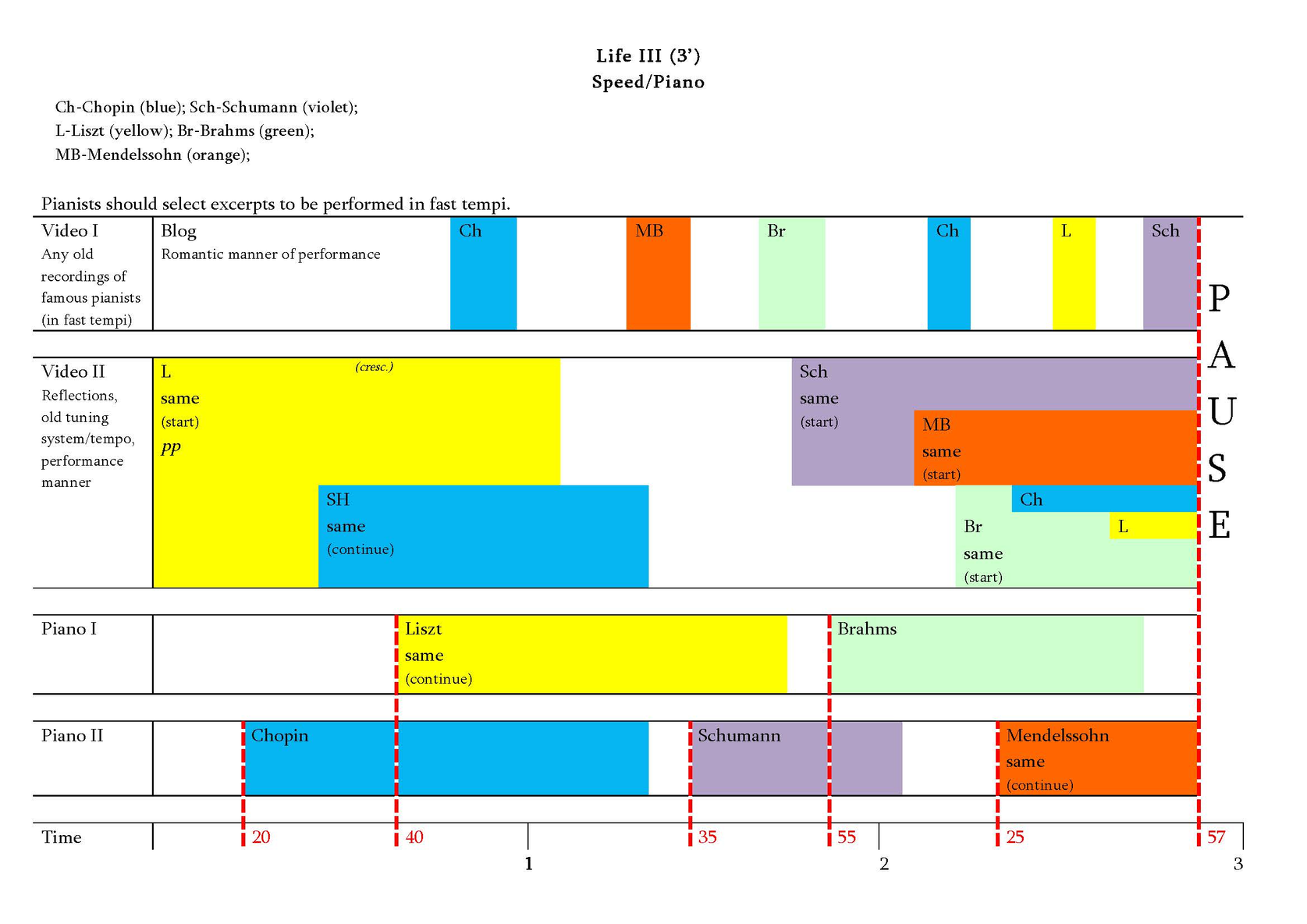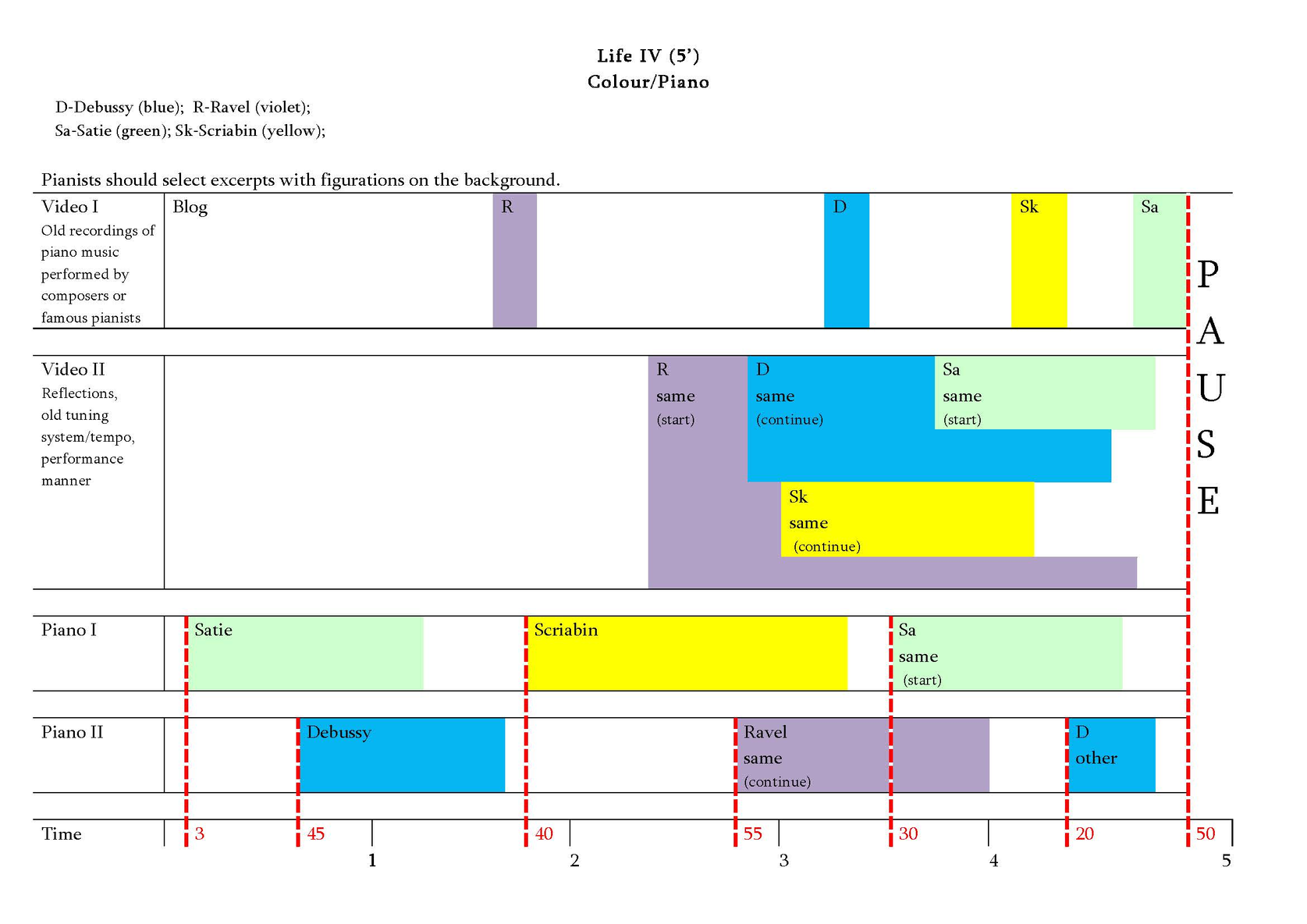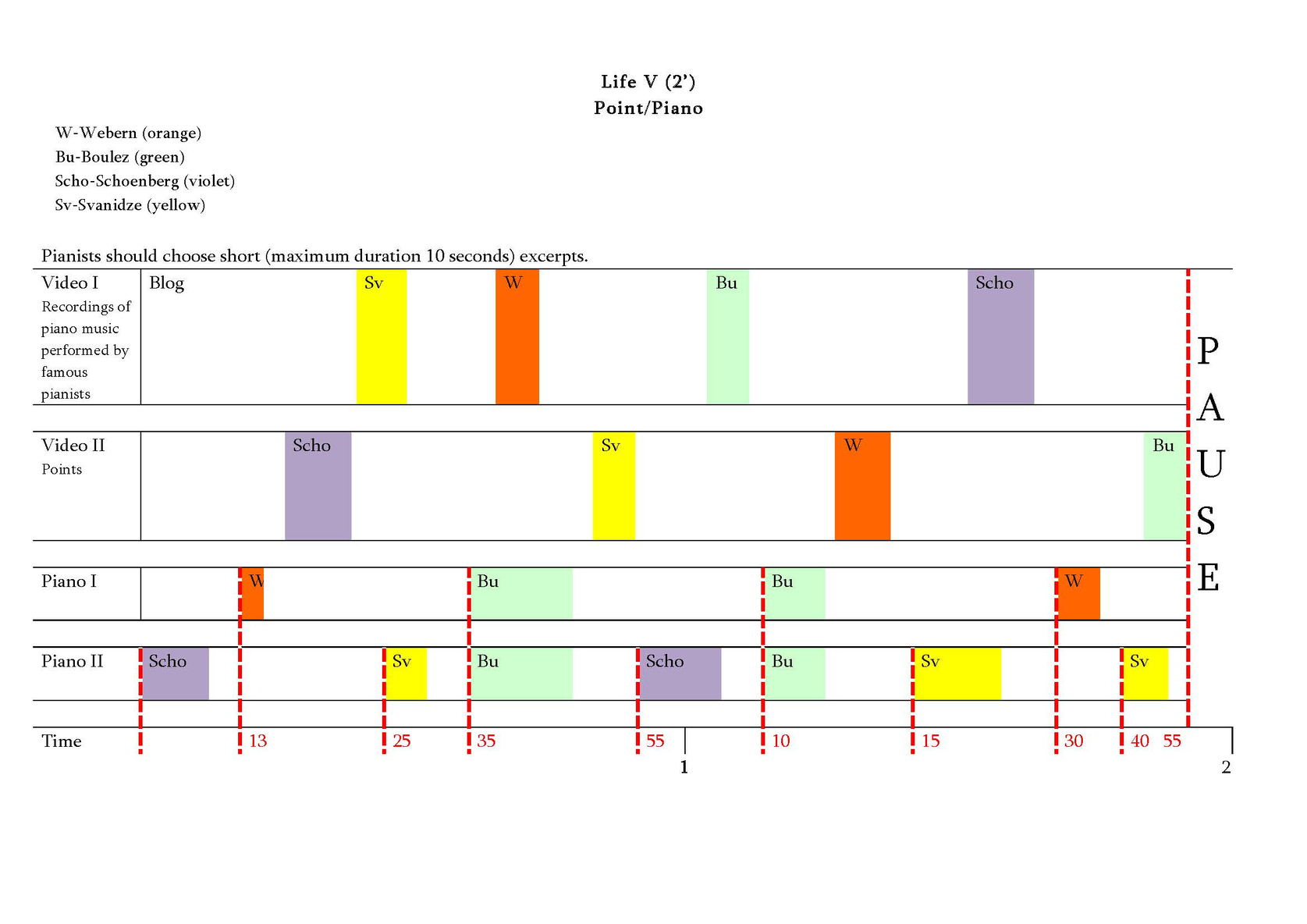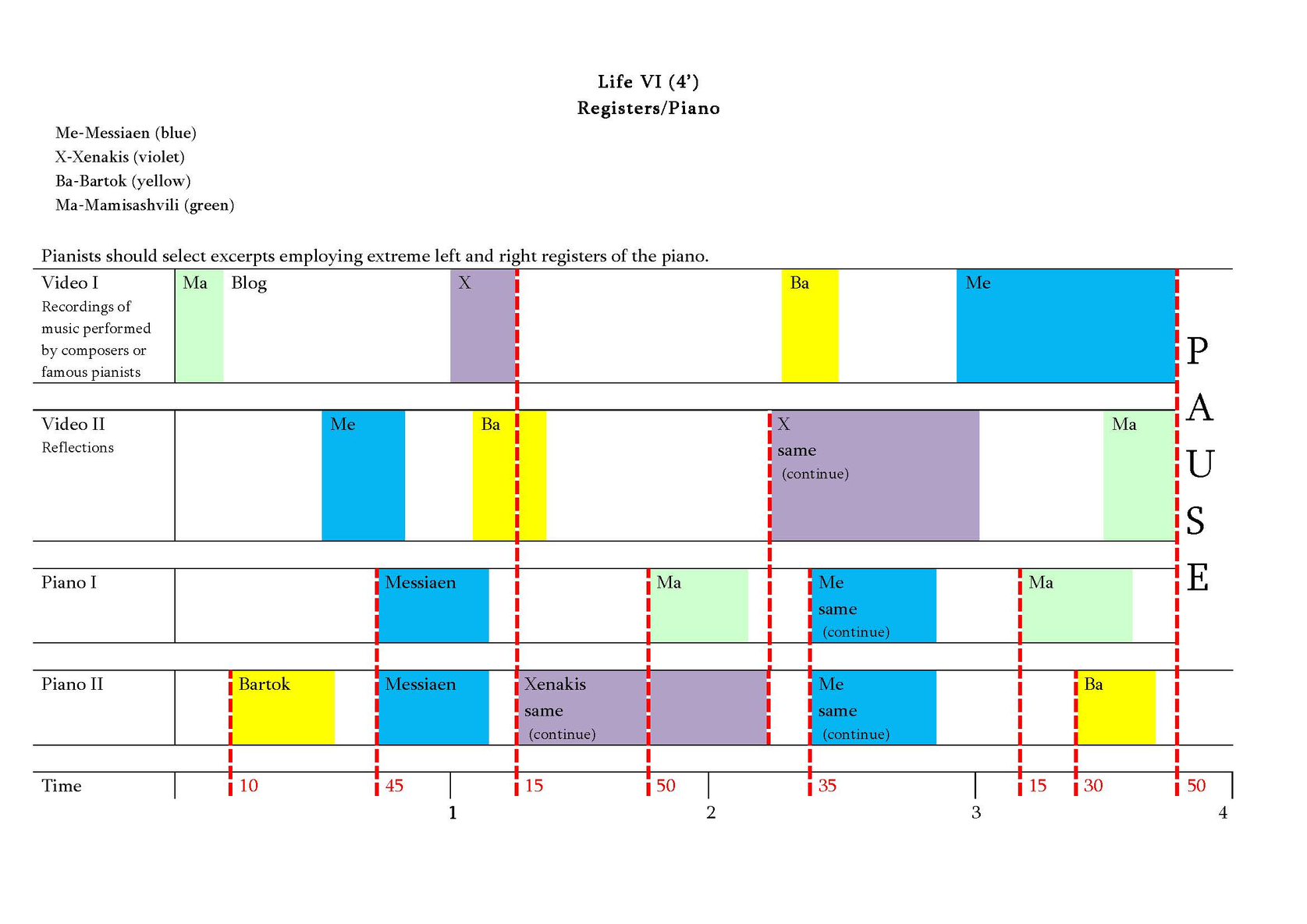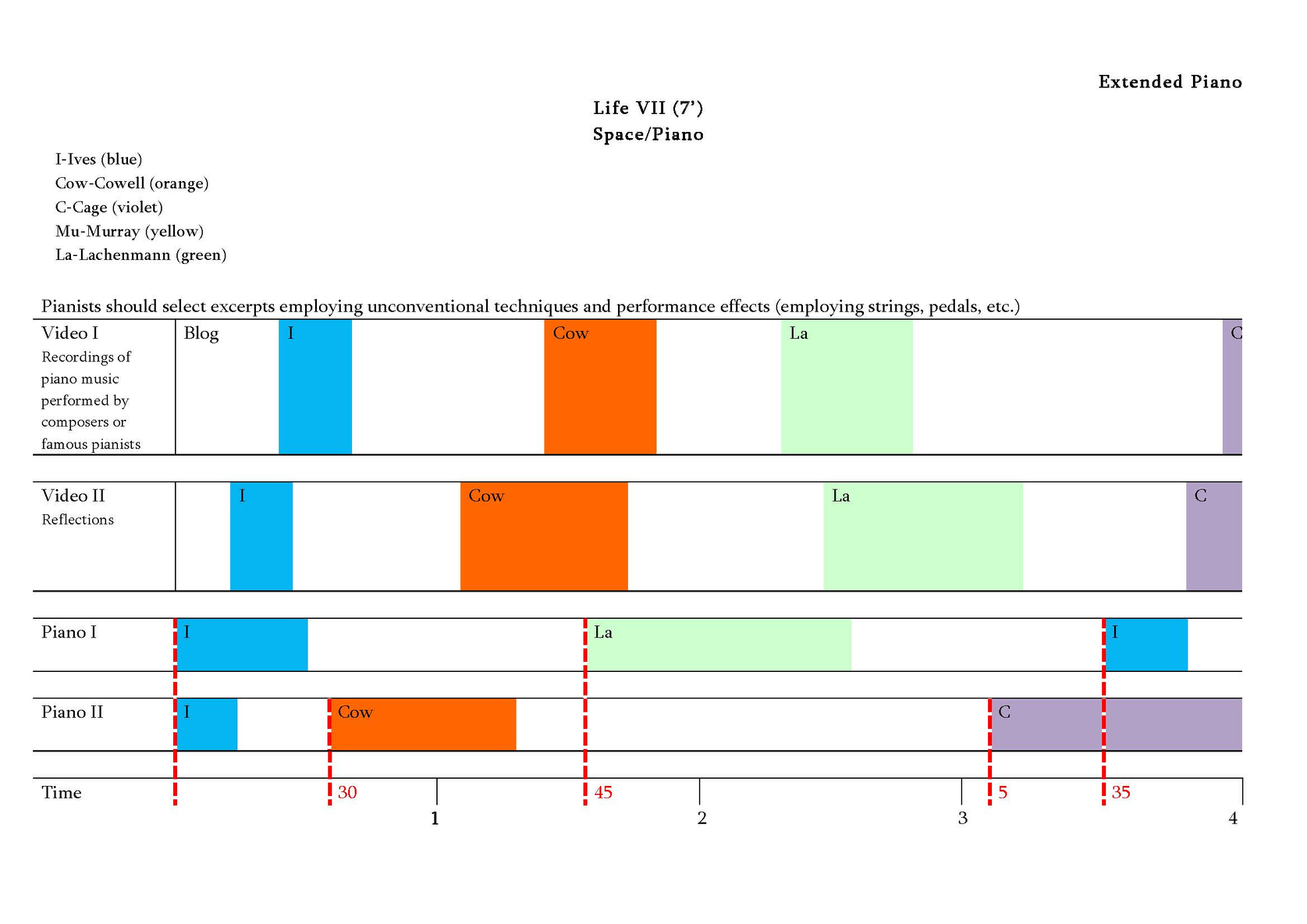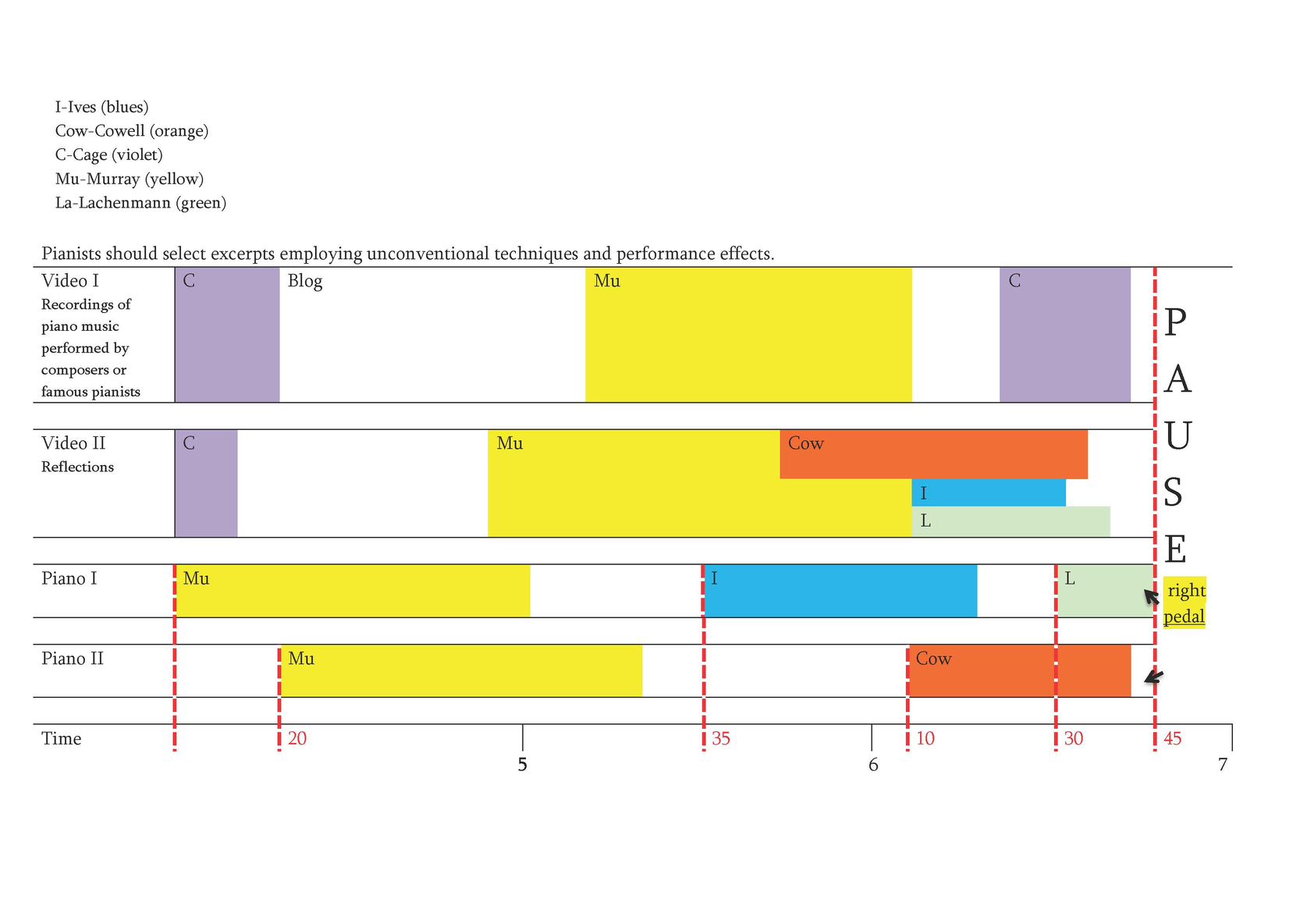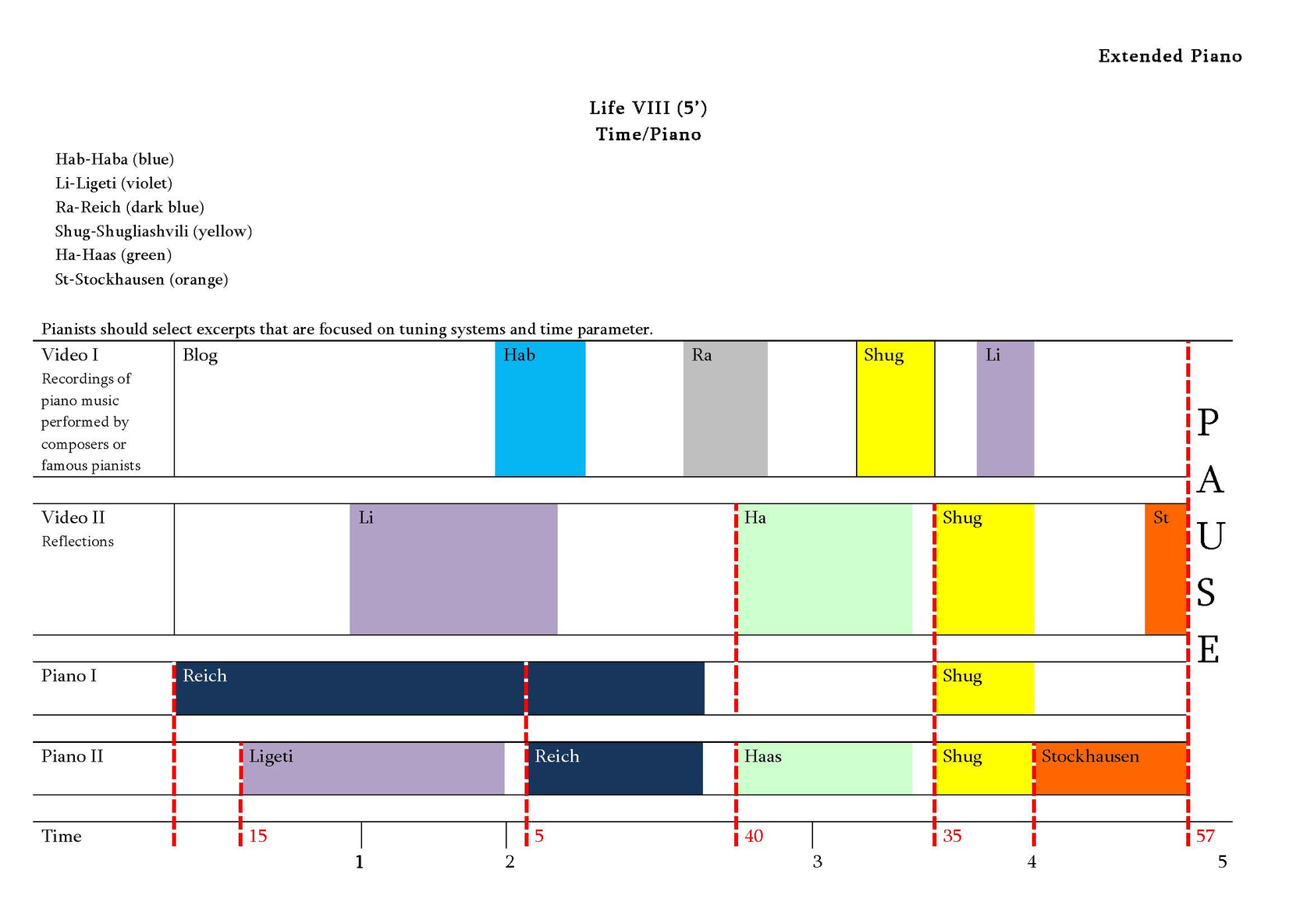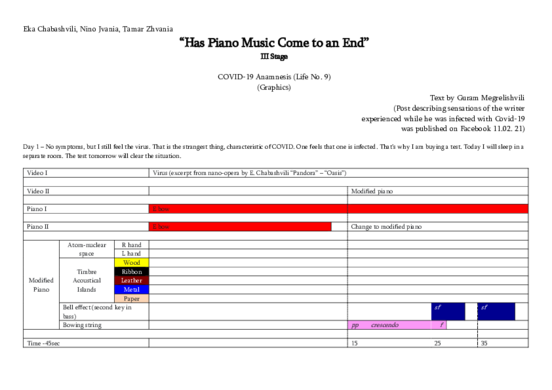The second stage is preceded by the first stage of the piece - “The Birth of the Piano” (duration 20 minutes) that reflects upon the materialization of the idea - the necessity of creating a new instrument, the piano. The piano and its sound are generally known to be a result of a reconsideration of the priorities that took place in the 18th century art. In an atmosphere of the global subjectivization of the art, as the inner life of an individual – a subject – gradually gained a central role in art and music particularly, the spirit of the new epoch created a need for rather impulsive reflection of emotions. The necessity to express flexible emotions demanded a new instrument producing more dynamic and flexible sound than a harpsichord – the leading keyboard instrument of the preceding era. This idea was so topical that three masters almost at the same time created keyboard instruments employing innovative sound-production mechanism. Though, Bartolomeo Cristofori is regarded as an inventor of the piano, the Italian master had two rivals for the name of the new instrument’s creator - French Jean Marius and German Christoph Gottlieb Schröter. Thus, the idea of the piano was in the air. And it materialized.
Chabashvili, again, interprets the theories explaining universe creation in a free, artistic way. At the same time, interestingly, she uses unconventional, truly contemporary piano sonorities, produced through unconventional, rather modern piano techniques, to describe the birth of the instrument on the edge of the 17th and 18th centuries. The process is depicted from the perspective of the Piano Life No. 9. As Joseph Haydn used the sound typical for his own epoch to imitate through music the Creation in his eponymous oratorio, Chabashvili employs the sonorities of the piano that are representative of our epoch.
The first stage consists of eight movements resembling the process of the materialization and creation of the piano universe. The titles of the movements describe stages of that process:
The piece, bearing the same title as the research itself -
“Has Piano Music Come to an End?”
offers two new options of employing and one new option of modifying the piano:
Before we introduce all of them, let us present the piece itself.
The piece consists of three parts – three stages, as we call them.
I Stage – Materialization of the Idea, the Birth of the Piano and Life No.1
II Stage – 7 Lives of the Piano
III Stage –COVID-19 Anamneses and Life No.9
We consider the history of piano music as a cycle consisting of several lives. Life, according to Eka Chabashvili, is a time-bound phenomenon, representing one of many phases of existence and it is constantly changing in a multiple time and spatial dimensions. Each life consists of invisible gravitational waves that pass through one phase of time and space and then disappear... Then new waves arise, creating a new phase of existence and a new life emerges. Thus, eternity is a sequence of those phases. The transitional period between the phases is the Apocalypse. The Apocalypse is a kind of the end of gravity, the longing for the end and the beginning of the new phase. Thus, Stockhousen’s announcement could be connected (at least, by us) with the Idea of the Apocalypse and longing for it. Actually, Chabashvili interprets particular scientific theories (in this case – the theory of gravitational waves) in a quite free way, as an artistic idea that serves as a foundation of the construction of the piece.
- Wandering Information Signals
- Net of Signals
- Explosions and Creation of Spaces
- Hologram of The Universe
- Gravity
- Times Emerge
- Materialization
- Life No. 1 – The Birth of the Piano
The piece ends with CODA– Other Perspectives – the video-retrospective of piano modifications by various masters, composers and artists throughout history of piano development.
The third stage (duration 15 minutes) represents Life No. 9 – Covid-19 Anamneses depicted with the help of Modified Piano ModEkAl. The central role in this stage is played by the instrument developed by Eka Chabashvili in cooperation with a piano master Alexander Zirakashvili. Though, Chabashvili engages also two acoustic pianos which are played in first two stages.
The major part of the piece was composed in the pandemic era and no artist could have avoided this issue. The structure of the third stage is based on a Facebook post by the famous Georgian writer Guram Megrelishvili, who described in detail all phases he went through being infected with Covid-19. Thus, the third stage represents the anamnesis of COVID-19. Megrelishvili’s post influenced not only the structure of the piece. Some excerpts are also recited by performers, or reflected on the screens, in video-installations.
Thus, having researched and rethought this history of piano music, we divided it into 9 lives. Each life is characterized by its own piano sonority demonstrating some major principles of the musical thinking of the corresponding epoch.
The biggest part of that history is depicted in the second stage of the piece (duration - 30 minutes) which is dedicated to 7 lives (excluding the Life No. 1 describing the birth of the piano and the last Life No. 9 introducing the piano of the present day).
This stage is completely based on piano music composed by 31 composers who, in our opinion, influenced development of the piano music genre. We included among those composers several Georgian composers too. They might not have influenced the development of art music worldwide, but they demonstrate how the spirit of the epoch penetrates all national schools, despite of various obstacles – in our case, the discriminating policy of the Soviet regime that has forbidden progressive art for decades. It was not an easy task to pick those 31 composers, and we did it together – the composer and two pianists, who have studied and performed throughout their careers various pieces representing all epochs.
The seven periods given in the second stage are titled as follows:
